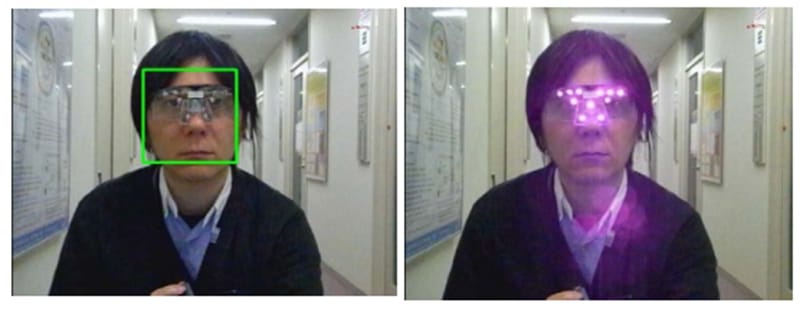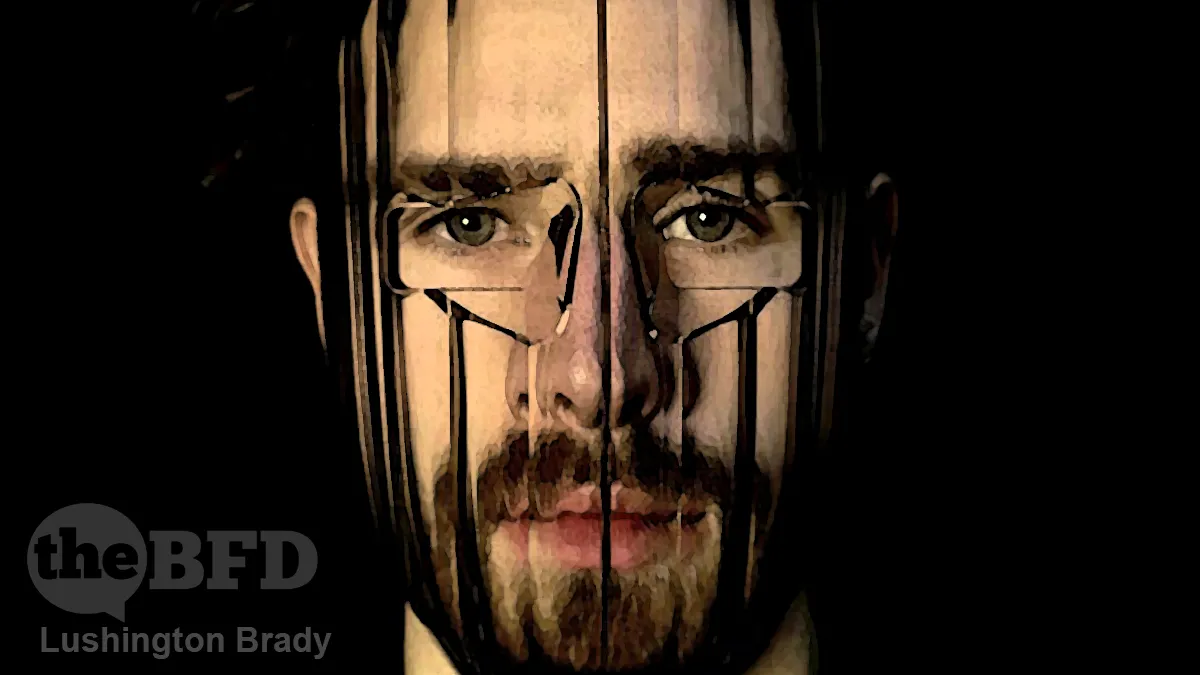Don’t we all get a laugh out of watching the fashions in old science fiction movies? Whether it’s the silver-foil togas and plastic sandals of Things to Come or the power laces and inside-out pockets of Back to the II, every film that tries to depict future fashions is hilarious in retrospect.
Sometimes the fashion choices in SF are dictated by the story-world: Blade Runner featured then-future-LA residents carrying umbrellas to ward off acid rain. Modern fashion-designers are also creating accessories with a very real and futuristic purpose in mind.
Concerned about the rise of facial-recognition technology, some designers are creating fashion for a somewhat counterintuitive purpose: not to get noticed, at least by the cameras.
Who ever thought that, in the battle against Big Brother, it would be the fashion designers coming to our rescues?
In the Netherlands, Jip van Leeuwenstein designed a transparent “surveillance exclusion” mask that obfuscates a wearer’s face to facial-recognition cameras but not other people.
“By wearing this mask formed like a lens it possible to become unrecognizable for facial recognition software and because of it’s transparence you will not lose your identity and facial expressions,” von Leeuwenstein writes. “So it’s still possible to interact with the people around you.”
Hong Kong protesters used laser pointers to thwart CCP facial recognition. A Japanese professor has gone one better, while London artists are using WWII-era technology.

In Japan, Isao Echizen, a professor at the National Institute of Informatics in Tokyo, designed a “privacy visor” fitted with near-infrared LED lights. When worn, the facial-recognition software can’t tell there’s a human face behind the lights, according to Echizen’s tests.
In the U.K., artists in “The Dazzle Club” have walked the streets London with their faces painted in blue, red and black stripes in an effort obfuscate their faces from the city’s 420,000 CCTV cameras […]
Other anti-surveillance apparel includes shiny fabrics that reflect thermal radiation that drones search for, beanie hats that confuse the facial-recognition system ArcFace, and Hyperface, which makes clothing with patterns that confuse A.I. into focusing on the fabric rather than your face.
Bigthink

London is notorious as one of the most-surveilled cities in the world (at least, outside China). A British court ruled last year that facial recognition technology doesn’t violate privacy and human rights. San Francisco is the first city in the U.S. to ban facial technology on city property, airports excluded. In a rare outbreak of sanity, a city councillor stated, “Good policing does not mean living in a police state”.
The problem, though, as the last two years have taught us, is that too many people are all-too-willing to live in a police state if they think they can trade it for an illusion of safety.









